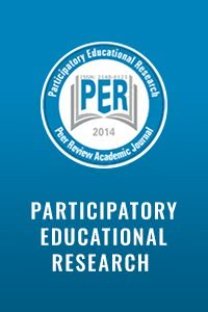Examining the Effects of Physical Variables in Classrooms on Students' Attention via the Internet of Things
Examining the Effects of Physical Variables in Classrooms on Students' Attention via the Internet of Things
internet of things, education, physical variables, learning environment air quality, smart classroom,
___
- Airasian, P. W., & Gay, L. R. (2003). Educational research: Competencies for analysis and application. Prentice Hall. https://doi.org/10.37074/jalt.2018.1.2.1
- Atzori, L., Iera, A., & Morabito, G. (2010). The internet of things: A survey. Computer networks. 54(15), 2787-2805. https://doi.org/10.1016/j.comnet.2010.05.010
- Bako-Biro, Z., Clements-Croome, D. J., Kochhar, N., Awbi, H. B., & Williams, M. J. (2012). Ventilation rates in school sand pupils’ performance. Building and Environment, 48, 215-223. https://doi.org/10.1016/j.buildenv.2011.08.018
- Barrett, P. S., Zhang, Y., Davies, F., & Barrett, L. C. (2015). Clever classrooms: Summary report of the HEAD project. University of Salford. http://usir.salford.ac.uk/id/eprint/35221
- Başaran, I. E. (1996). Eğitim Psikolojisi. Ankara: Gül Yayınevi.
- Belissent, J. (2010). Getting clever about smart cities: new opportunities require new business models. Cambridge, Massachusetts, USA.
- Cech, P. (2016). Smart Classroom Study Design for Analysing the Effect of Environmental Conditions on Students’ Comfort. Intelligent Environments, 21, 14–23. https://doi.org/10.3233/978-1-61499-690-3-14
- Choi, K., & Suk, H. J. (2016). Dynamic lighting system for the learning environment: performance of elementary students. Optics express, 24(10), A907-A916. https://doi.org/10.1364/OE.24.00A907
- Daisey, J. M., Angell, W. J., & Apte, M. G. (2003). Indoor air quality, ventilation and health symptoms in schools: an analysis of existing information. Indoor air, 13(1), 53-64. https://doi.org/10.1034/j.1600-0668.2003.00153.x
- Driscoll, M. P. (2000). Psychology of learning for instruction. Needham Heights, MA: A Division of Paramount Publishing.
- Emmons, M., &Wilkinson, F. C. (2001). Designing the electronic classroom: Applying learning theory and ergonomic design principles. Library hi tech, 19(1), 77-87. https://doi.org/10.1108/07378830110384610
- Evans, D. (2011). The internet of things: How the next evolution of the internet is changing everything. CISCO whitepaper, 1(2011), 1-11. http://www.cisco.com/c/dam/en_us/about/ac79/docs/innov/IoT_IBSG_0411FINAL.pdf. Fraenkel, J. R., Wallen, N. E., &Hyun, H. H. (2011). How to design and evaluate research in education. McGraw-Hill.
- Gay, L. R., & Airasian, P. (2000). Educational research: Competencies for. Analysis and application (6th edition). Ohio: Prentice Hall.
- Grove (2017). Retrieved June 27, 2020, from http://wiki.seeed.cc/Grove_Starter_Kit_v3/.
- Gubbi, J., Buyya, R., Marusic, S., & Palaniswami, M. (2013). Internet of Things (IoT): A vision, architectural elements, and future directions. Future Generation Computer Systems, 29(7), 1645-1660. https://doi.org/10.1016/j.future.2013.01.010
- Guntha, R., Hariharan, B., & Rangan, P. V. (2016). Analysis of Echo Cancellation Techniquesin Multi-Perspective Smart Classroom. International Conference On Advances In Computing, Communications And Informatics (ICACCI), 1135-1140. https://doi.org/10.1109/ICACCI.2016.7732197
- Illeris, K. (Ed.). (2009). Contemporary theories of learning: learning theorists in their own words. Routledge.
- Johnson, E. (2001). Let’s hear it for learning: Improving classroom acoustics can maximize student productivity at a minimal cost. American School and University, 73(11), 28–30.
- Kaur, A., Bhatia, M., & Stea, G. (2022). A Survey of Smart Classroom Literature. Education Sciences, 12(2), 86. https://doi.org/10.3390/educsci12020086
- Lau, J., & Ng, K. M. (2014). Conceptualizing the counselling training environment using Bronfenbrenner’s ecological theory. International Journal for the Advancement of Counselling, 36(4), 423-439. https://doi.org/10.1007/s10447-014-9220-5
- Lei, S. A. (2010). Classroom physical design influencing student learning and evaluations of college instructors: A review of literature. Education, 131(1), 128-135.
- McMillan, J. H., & Schumacher, S. (2010). Research in education. Evidence-based research (7th ed.) London: Pearson.
- Orosa, J. A., Costa, Á. M., Rodríguez-Fernández, Á., &Roshan, G. (2014). Effect of climate change on outdoor thermal comfort in humid climates. Journal of Environmental Health Science and Engineering, 12(1), 46. https://doi.org/10.1186/2052-336X-12-46
- Palau, R., & Mogas, J. (2019). Systematic literature review for a characterization of the smart learning environments. In A. M. Cruz & A. I. Aguilar (Eds.), Propuestas multidisciplinares de innovación e intervención educativa. Universidad Internacional de Valencia.
- Recalde, J. M., Palau, R., Galés, N. L., & Gallon, R. (2020). Developments for smart classrooms: School perspectives and needs. International Journal of Mobile and Blended Learning (IJMBL), 12(4), 34-50. https://doi.org/10.4018/ijmbl.2020100103
- Schunk, D. H. (2009). Öğrenme teorileri. (Çev. Muzaffer Şahin) Ankara: Nobel Yayıncılık.
- Seppanen, O., Fisk, W. J., & Lei, Q. H. (2006). Effect of temperature on task performance in office environment. Lawrence Berkeley National Laboratory.
- Solso, R. L., Maclin, M. K., &Maclin, O. H. (2007). Bilişsel psikoloji (Çev. A. Ayçiçeği-Dinn). İstanbul: Kitabevi.
- Şimşek, A. (2009). Öğretim tasarımı. Nobel Yayın Dağıtım.
- Tanner, C. K. (2009). Effects of school design on student outcomes. Journal of Educational Administration, 47(3), 381-399. https://doi.org/10.1108/09578230910955809
- Uzelac, A., Gligoric, N., & Krco, S. (2015). A comprehensive study of parameters in physical environment that impact students’ focus during lecture using Internet of Things. Computers in Human Behavior, 53, 427-434. https://doi.org/10.1016/j.chb.2015.07.023
- Wargocki, P., & Wyon, D. P. (2007). The effects of moderately raised classroom temperatures and classroom ventilation rate on the performance of school work by children (RP-1257). Hvac & RResearch, 13(2), 193-220. https://doi.org/10.1080/10789669.2007.10390951
- Wells, V. K., & Daunt, K. L. (2016). Eduscape: The effects of servicescapes and emotions in academic learning environments. Journal of Further and Higher Education, 40(4), 486-508. https://doi.org/10.1080/0309877X.2014.984599
- ISSN: 2148-6123
- Yayın Aralığı: Yılda 6 Sayı
- Başlangıç: 2014
- Yayıncı: Özgen KORKMAZ
Abdulkerim AYDIN, Yüksel GÖKTAŞ
The Effects of Teacher Relationships on Student Academic Achievement: A Second Order Meta-Analysis
Examining Cross-Cultural Applicability via Generalizability Theory
Effects of Using the Staged Self-Directed Learning Model at Distance English Learning
Examining the Achievement Test Development Process in the Educational Studies
Melek Gülşah ŞAHİN, Yıldız YILDIRIM, Nagihan BOZTUNC ÖZTÜRK
Educational Technology Research Trends: A 10-Year Content Analysis of PhD Dissertations
Ali GÜNDÜZ, Cengiz GÜNDÜZALP, Ömer KOÇAK, Yüksel GÖKTAŞ
Improving Student Classroom Teachers’ Content Organization Skills Through Practicum
